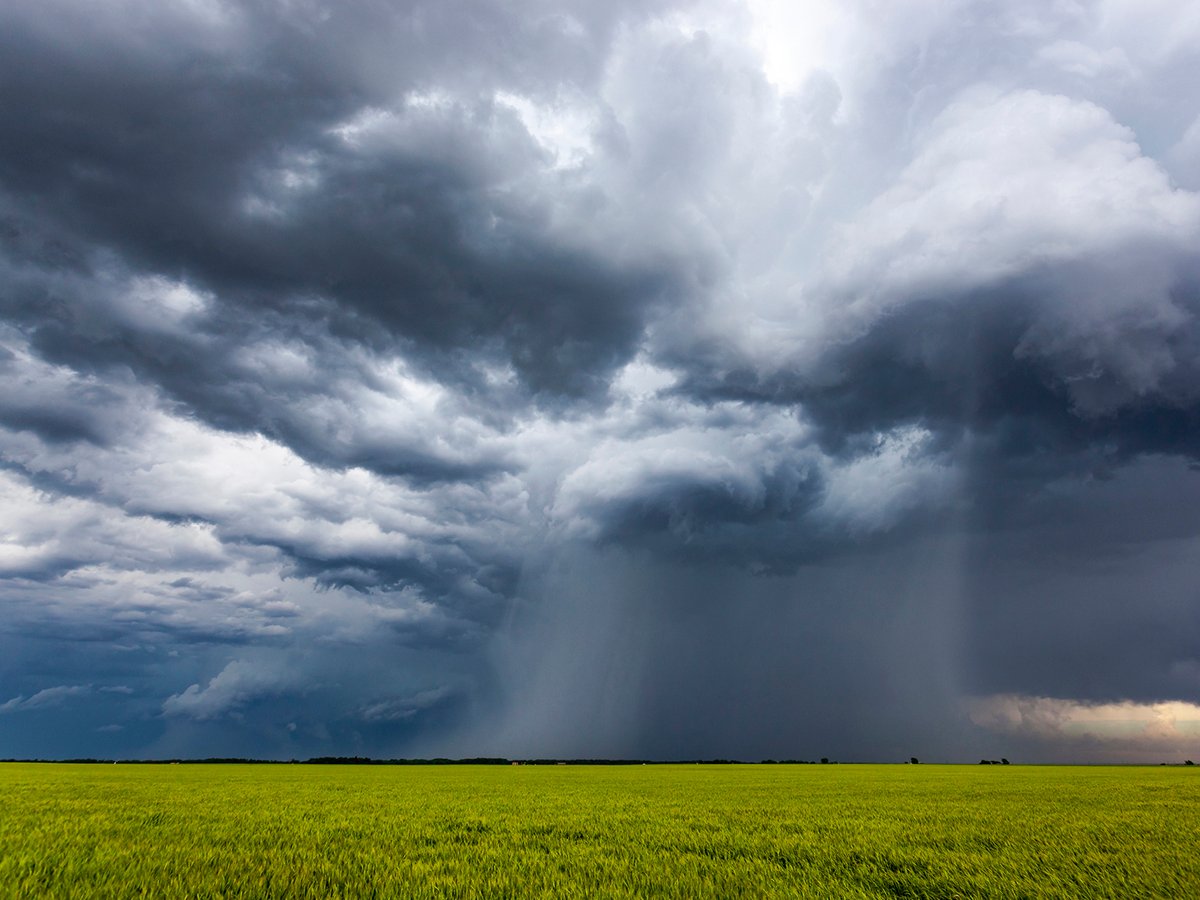100 MILE HOUSE, B.C. – There is a rusty haze across the mountain ridges of British Columbia’s pine forests.
That haze comes from the mountain pine beetle that has attacked trees on 33 million acres in the province.
In regions like Prince George, the disease has wiped out nearly all the pine stands, said rancher Rick Mumford, who works for the B.C. Cattlemen’s Association land stewardship committee.
Now that the trees are dead, there is a major threat of wildfire and costly damage as pines topple across roads, riparian areas and crush livestock fences so cattle and wildlife escape or become trapped, said rancher Dave Hayward-Farmer, chair of the land stewardship committee.
Read Also

Extreme rain increases as planet warms
In this issue, we are going to wrap up our look at extreme rainfall by examining the different weather patterns that tend to be associated with these rainfall events.
“In B.C. there is a lot of grazing under the pine stands but once it all starts falling down it will be like pick up sticks and the cattle won’t be able to get through,” Mumford said in an interview during the BCCA annual meeting in 100 Mile House June 13.
“If a fire gets going there will be no stopping it,” said Hayward-Farmer.
“Every time you get a good wind storm you get a bunch of trees down but it will happen over 15 years. Eventually it will all fall down because the trees will rot,” said Mumford.
A two year federal government program provided $2.4 million to help replace fences. About 120 kilometres of fence have been replaced.
The B.C. Ministry of Forests builds the fences, but grazing leaseholders must maintain them and on some large leases there could be 100 km of fence, too much for ranchers to regularly check.
“It has been a real nightmare as to what the effects are going to be and it is so hard to convince our governments how long the effect is going to be if something isn’t done,” said Mumford.
Natural barriers were lost when trees died so new fences had to go in. Experiments with rock fences, brush and wire fences and traditional barbed-wire fences have gone in under the building program.
Ranchers want the program to continue so they can build enough fences.
The new fences also need a buffer zone. Under normal circumstances there is a five metre right of way but to avoid damage from dead fall, the new zone needs to be wider.
Few loggers are interested in clearing away a swath of 50 metres.
“Ranchers are family owned small businesses and it is well beyond their capabilities to do all this. We think government should be stepping up to the plate and providing some help,” Mumford said.
In addition, stumpage rates, the fee paid to government to cut timber, is too high for most ranchers to bear. It is about $15 per metre but varies throughout the province.
“With the low prices paid for logs you can’t do it for that,” said Hayward-Farmer.
“The bottom line is there is more area that has been attacked than can ever possibly be logged,” added Mumford.
A government job creation program has been proposed for unemployed forestry workers and the ranchers are hoping they will be eligible to hire people to remove dead trees. These can be hauled out for lumber or collected in the high country and burned as waste in the winter.















